I usually avoid synthetic blend duvets, but Panda's bamboo-infused Cloud duvet has just changed my mind
My Panda Cloud duvet review puts the vegan-friendly bamboo-blend duvet through its paces
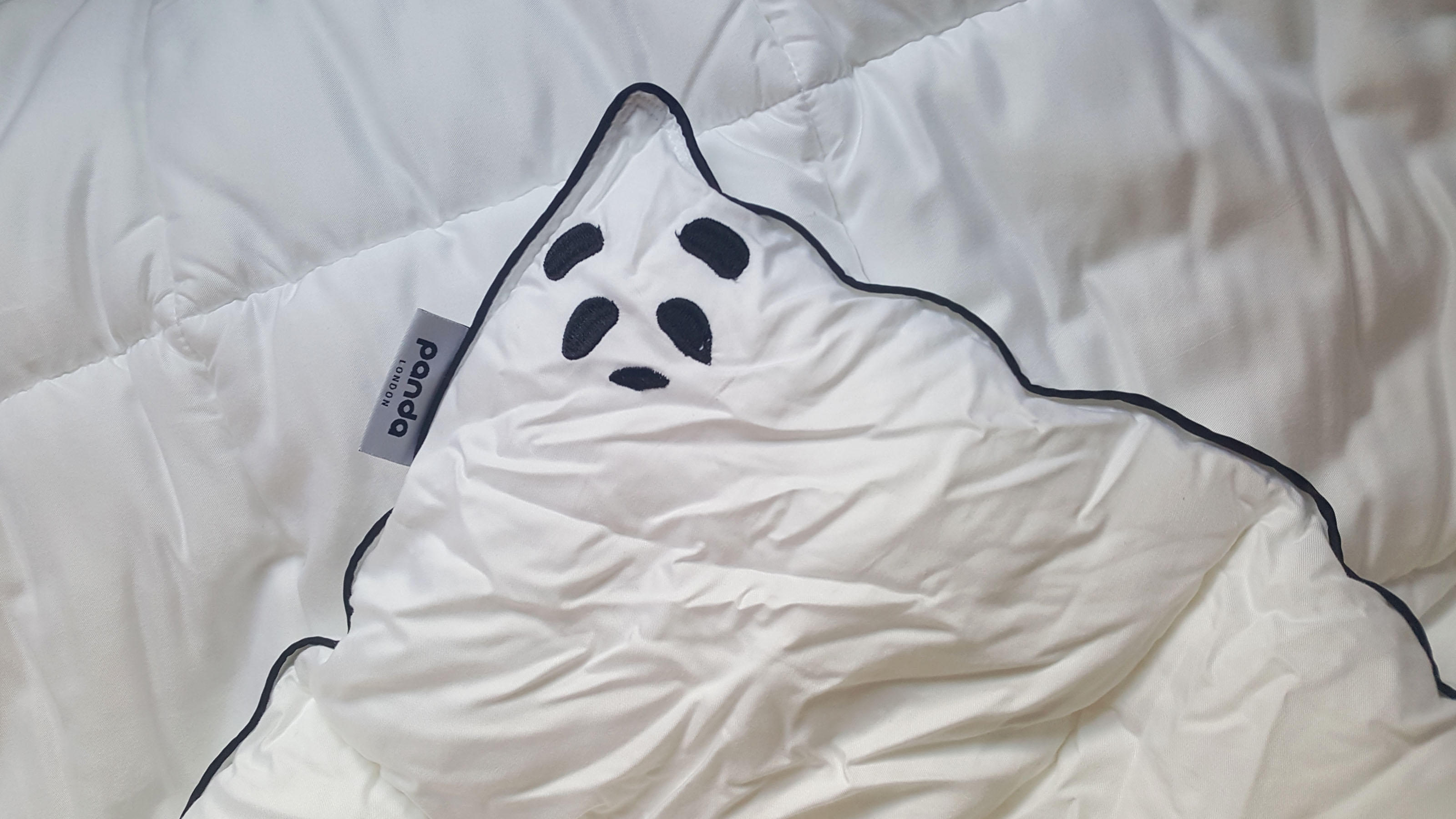
The Panda Cloud duvet blends the silky feel and temperature-regulating properties of bamboo with easy-care-to-care-for recycled polyester. The result is a great vegan-friendly duvet that ticks a lot of boxes.
-
+
Feels quite luxurious
-
+
Decent temperature regulation
-
+
Easy to care for
-
+
Vegan-friendly
-
+
30-night sleep trial
-
-
Fairly expensive
-
-
Limited tog options
-
-
Less breathable than a wool-filled duvet
Why you can trust Ideal Home

I put the Panda Cloud Duvet to the test to see how its bamboo-and-microfibre filling fares compared to the best duvets on the market.
In a nutshell
The Panda Cloud duvet has a lot going for it. Its mix of bamboo and recycled polyester microfibre filling offers the best of both worlds, incorporating the luxurious and temperature-regulating properties of bamboo with the easy-to-care-for properties of a synthetic duvet.
I'm a hot sleeper, and for me, this is the best synthetic mix duvet I've tested in terms of temperature regulation. To my mind, it can't beat the breathability and superb temperature regulation of a wool-filled duvet like the Woolroom Deluxe Washable Wool Duvet, but it does a far better job than any other synthetic duvet I've tested. And, it's vegan-friendly.
I also loved the touch of luxury the bamboo fibres delivered. Although the Cloud duvet wasn't as light as I expected from its name, I loved that extra bit of weightiness and the silky feel of both the cover and the filling itself. The Panda Cloud duvet feels like a premium product – almost as luxurious as a high-quality feather and down duvet, but without the use of animal byproducts.
If you want a duvet that can be machine-washed and line or tumble-dried and put back on the bed the same day, the Panda Cloud Duvet also delivers.
The only real downside I found is its limited tog options, but the 10.5 tog is good warmth rating for spring and autumn, and the 4.5 tog is good duvet tog for summer.
If you're a hot sleeper, you might just find this synthetic mix lacks the breathability you need, but, Panda's 30-night sleep trial offers a great way to test it out for yourself.
Sign up to our newsletter for style inspiration, real homes, project and garden advice and shopping know-how
Overall, I think this duvet offers a great mix of attributes. I'm not usually a huge fan of a synthetic duvet, but it's definitely the best synthetic-mix duvet I've tested, and if you're looking for a vegan-friendly duvet, I think the Panda Cloud duvet is a great buy.
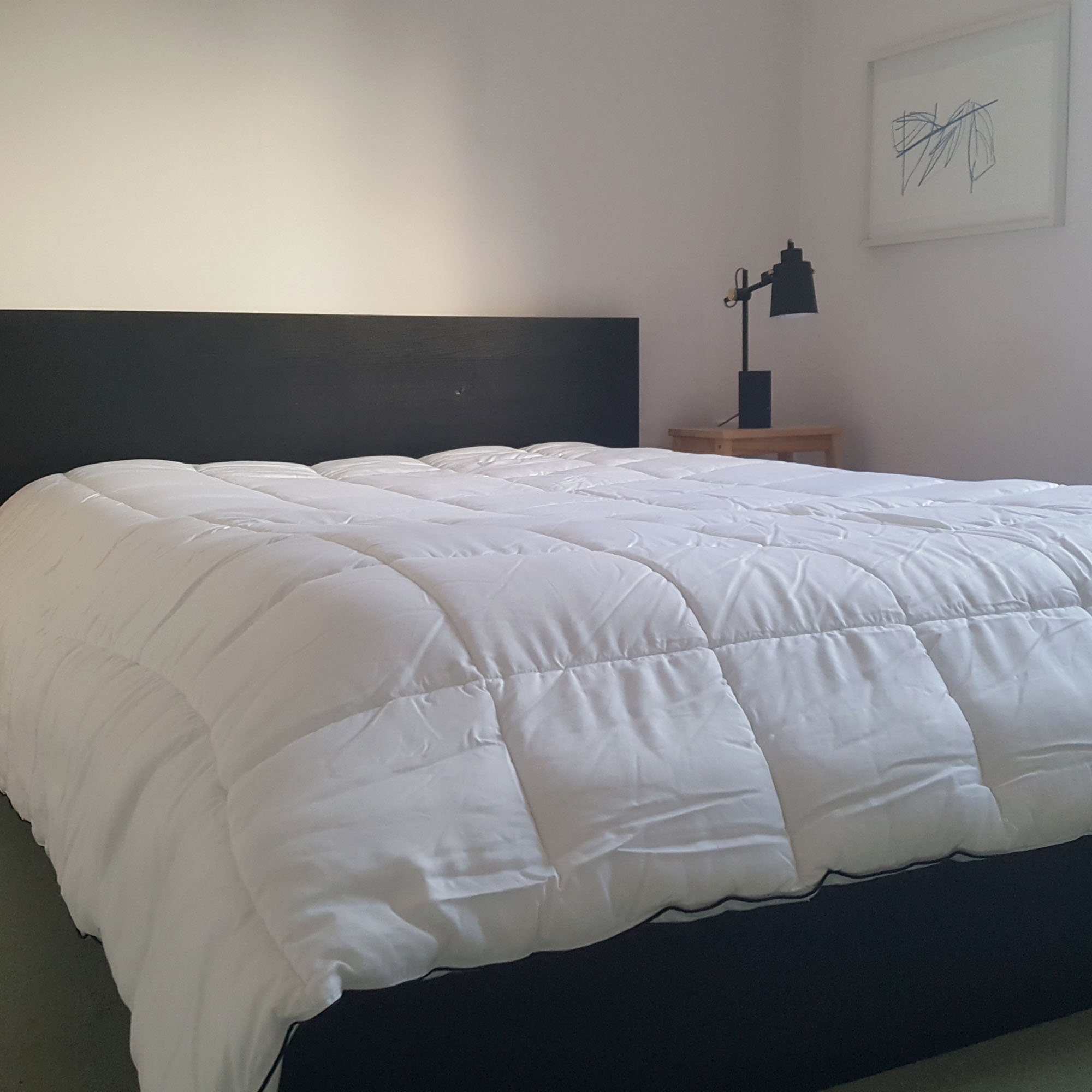
Specifications
- RRP: £99.95 / £129.95 / £144.95 / £159.95
- Sizes: single / double / king / super king
- Tog rating: 4.5 or 10.5
- Materials: bamboo rayon cover, filling 50% bamboo microfibre and 50% recycled polyester microfibre
- Care: Machine wash at 40°C, line dry or low tumble dry
- Manufacturer sleep trial: 30 nights
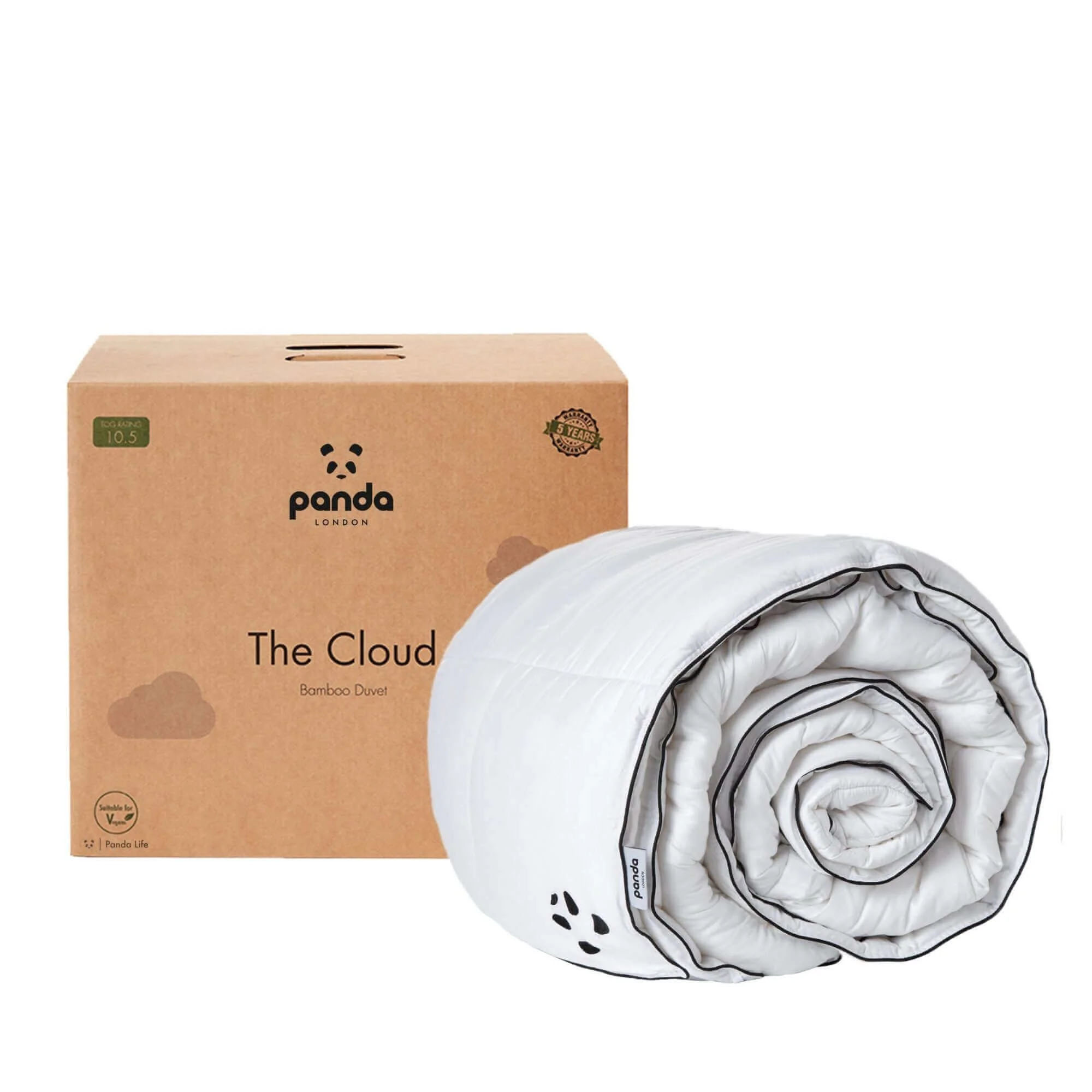

Feel
The Panda Cloud Duvet looks smart, with black piped edges and an embroidered Panda face on one corner, and it feels a lot more luxurious than your average synthetic duvet.
The cover is made from bamboo rayon and the filling is 50% bamboo microfibre and 50% recycled polyester microfibre. The addition of the bamboo gives the cover and filling a silky feel which makes it feel like a far more premium product than a regular microfibre duvet. The quilted surface is also a nice touch as it gives the duvet a good drape that's reminiscent of a feather and down duvet.
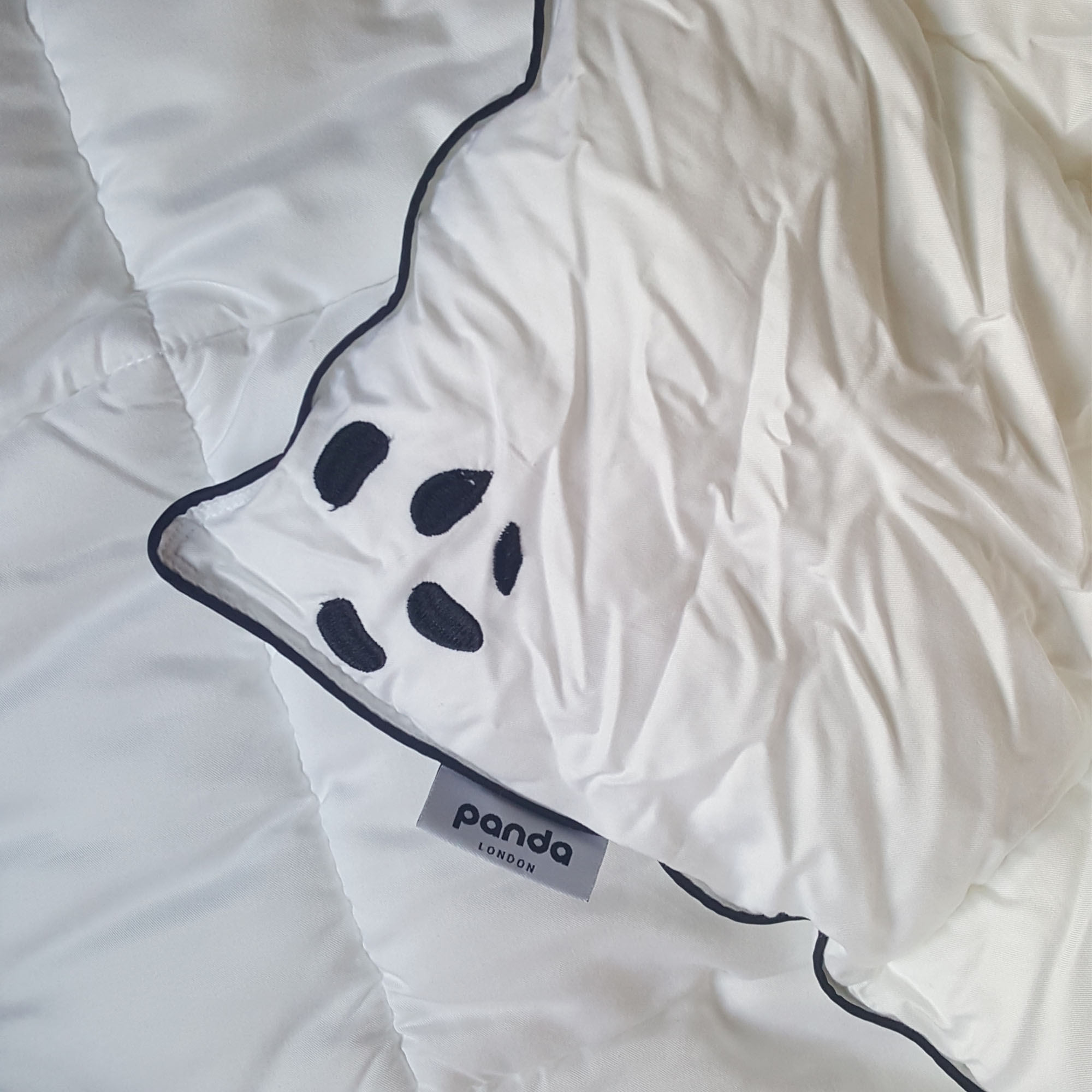
All in all, this feels like a nice duvet to climb under. The cover and filling barely make any rustling noise and the duvet is very malleable so I found it easy to wrap around me and tuck in to keep out any draughts.
I tested the 10.5 tog Panda Cloud duvet, and the only thing I'd mention regarding the duvet's feel is that I'm not sure I'd agree with Panda's assessment of it as light and airy in feel. Bamboo is a fairly heavy fibre, so I think this duvet has more weight to it than most 10.5 tog synthetic duvets.
For me, this slight extra weightiness is a positive, as I find I tend to sleep better under a heavier-weight duvet so I can often find pure microfibre or hollowfibre duvets too light. But, as 'clouds' go, Panda's Cloud Duvet feels denser and weightier than Emma's Cloud Duvet – a pure polyester duvet which really is feather-light.
This won't be an issue for most people, but if you're specifically looking for a very light duvet, in my opinion, this duvet may not be quite the best fit. Overall though, it feels great to sleep under.
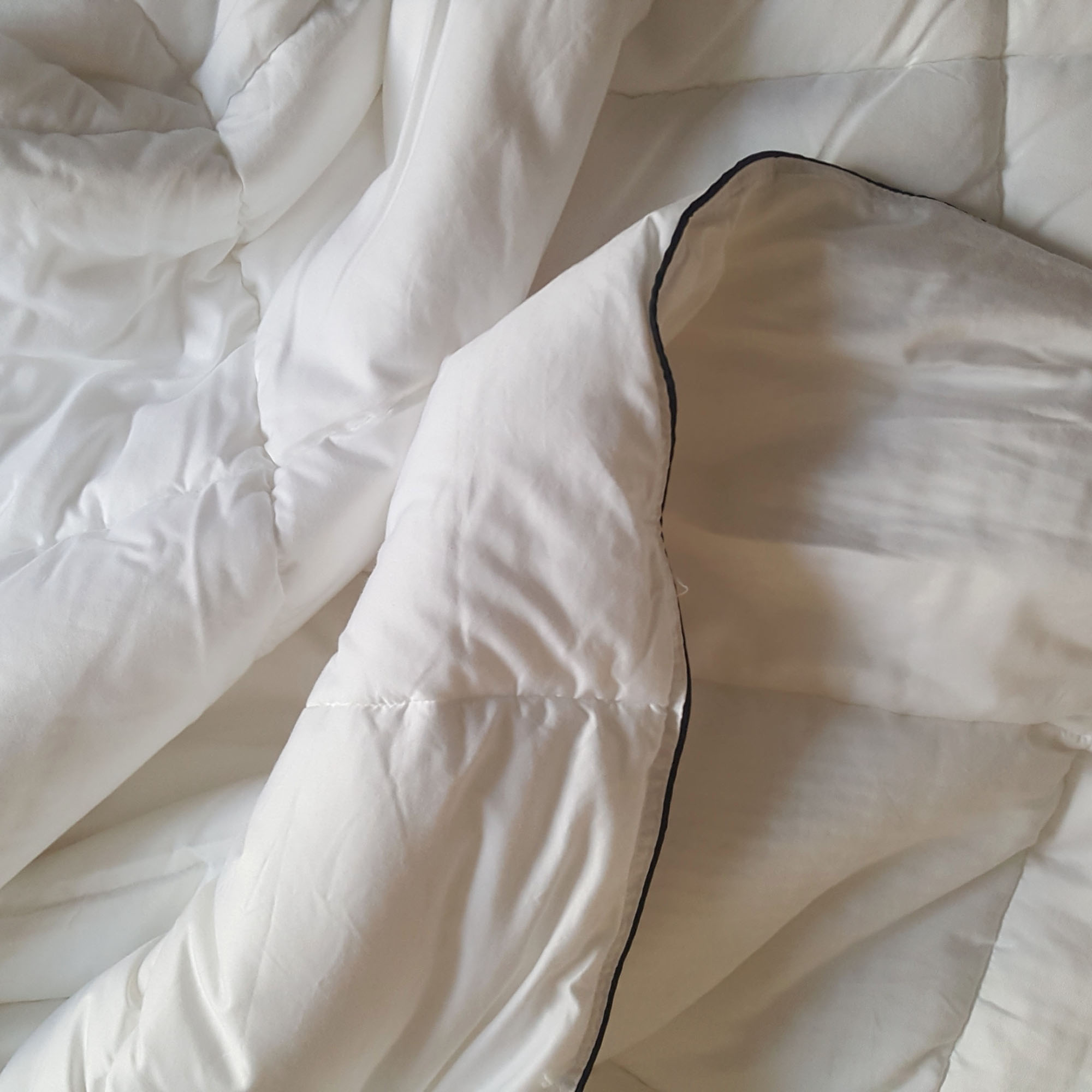
Temperature regulation
Synthetic duvets aren't usually the best at temperature regulation, but Panda says that the bamboo component of the Cloud duvet offers enhanced thermoregulation.
After sleeping under the Cloud duvet every night for a week, I'd agree with this. As a hot sleeper, I usually find I struggle to sleep well under a synthetic duvet, often finding them too cold when I first climb into bed but then overheating after a few hours and kicking off the covers. This pattern is then repeated throughout the night, making for a restless sleep.
I tested the 10.5 tog Cloud duvet, and initially I found it a little chilly when I climbed into bed. This said, it was winter and my bedroom was between 16°c and 18°c overnight, so it may have been asking a little much of a 10.5 tog duvet. Panda does also offer 4.5 tog warmth duvet, and says you can combine the two duvets together with 'SnuggleSnaps', although I couldn't find a way of purchasing these on the website.
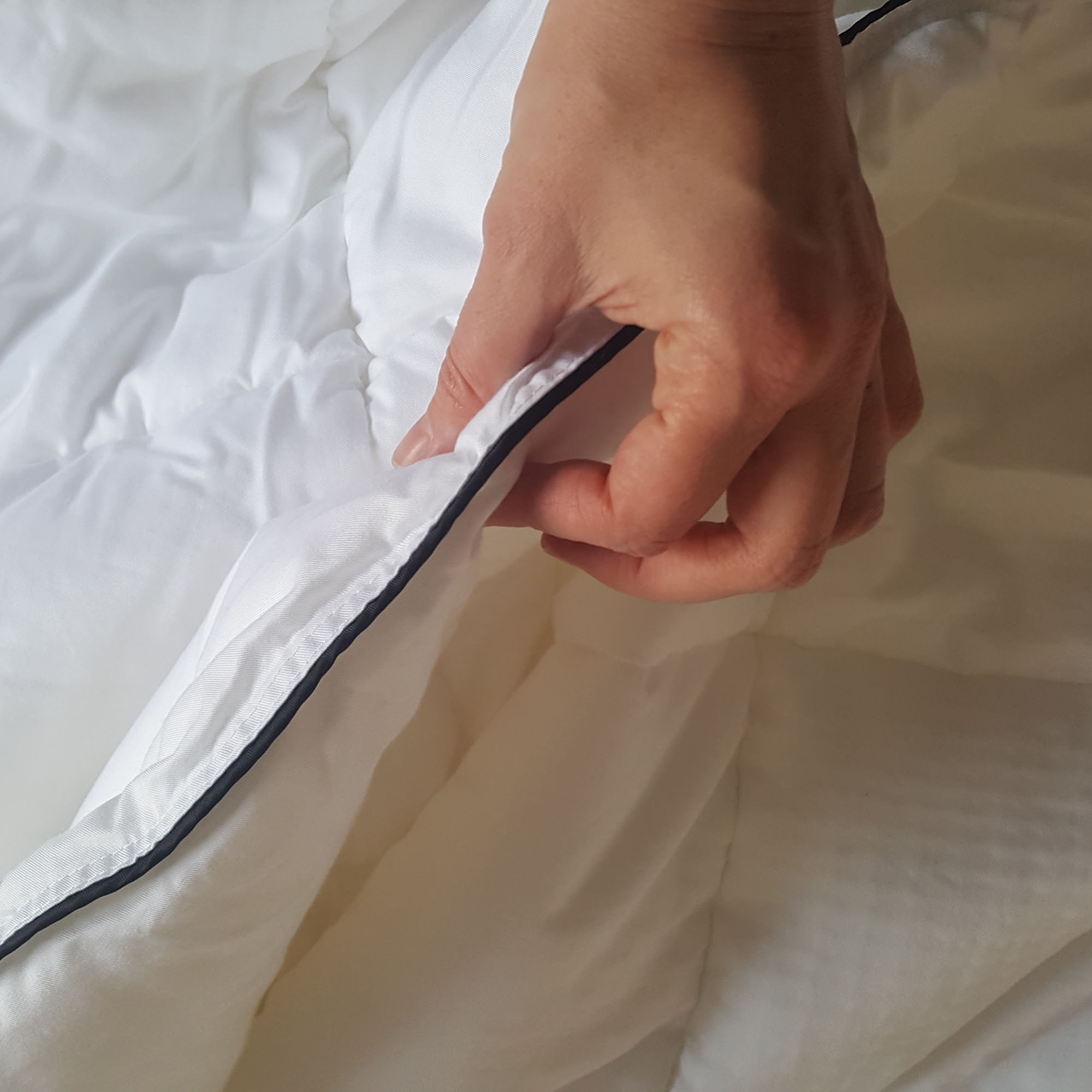
However, I did soon warm up enough that I found the 10.5 tog option a good duvet tog for me. And, I didn't become roasting hot like I find I do with most synthetic duvets. I tended to find I woke up once during the night because I was on the warm side, but it was a far cooler sleep than I've experienced under most synthetic duvets so that bamboo mix did seem to help combat polyester's biggest drawback.
For me, the temperature regulation couldn't compete with a wool-filled duvet – as a hot sleeper, I still think wool is by far the best duvet filling for me, so the Woolroom Deluxe Washable Wool Duvet is the one that will be staying on my bed longterm.
But, if you want to benefit from some of the advantages a synthetic-mix duvet filling offers – such as machine washability, quick drying times, and a (slightly) lower price point – I do think the Panda Cloud Duvet offered a better-balanced sleep temperature than most of its synthetic competition. For instance, I found the Panda Cloud Duvet a cooler and more enjoyable sleep experience than the Simba Hybrid Duvet with its cooling 'Stratos' layer, and far cooler than the Emma Cloud duvet.
Ease of care
One of the big plus points of the Panda Cloud duvet, just like any synthetic-filled duvet, is how easy it is to care for. It can be machine washed at 40°C (as long as you have a large enough washing machine for your duvet size), and then line-dried or tumble-dried on a low setting.
This makes the question of how to wash a duvet far easier to manage and means you should be able to wash the Cloud duvet and get it back on the bed the same day.
I found it far easier to freshen up than a feather and down or a wool duvet, both of which tend to take a long time to air dry (if they can be washed at all).
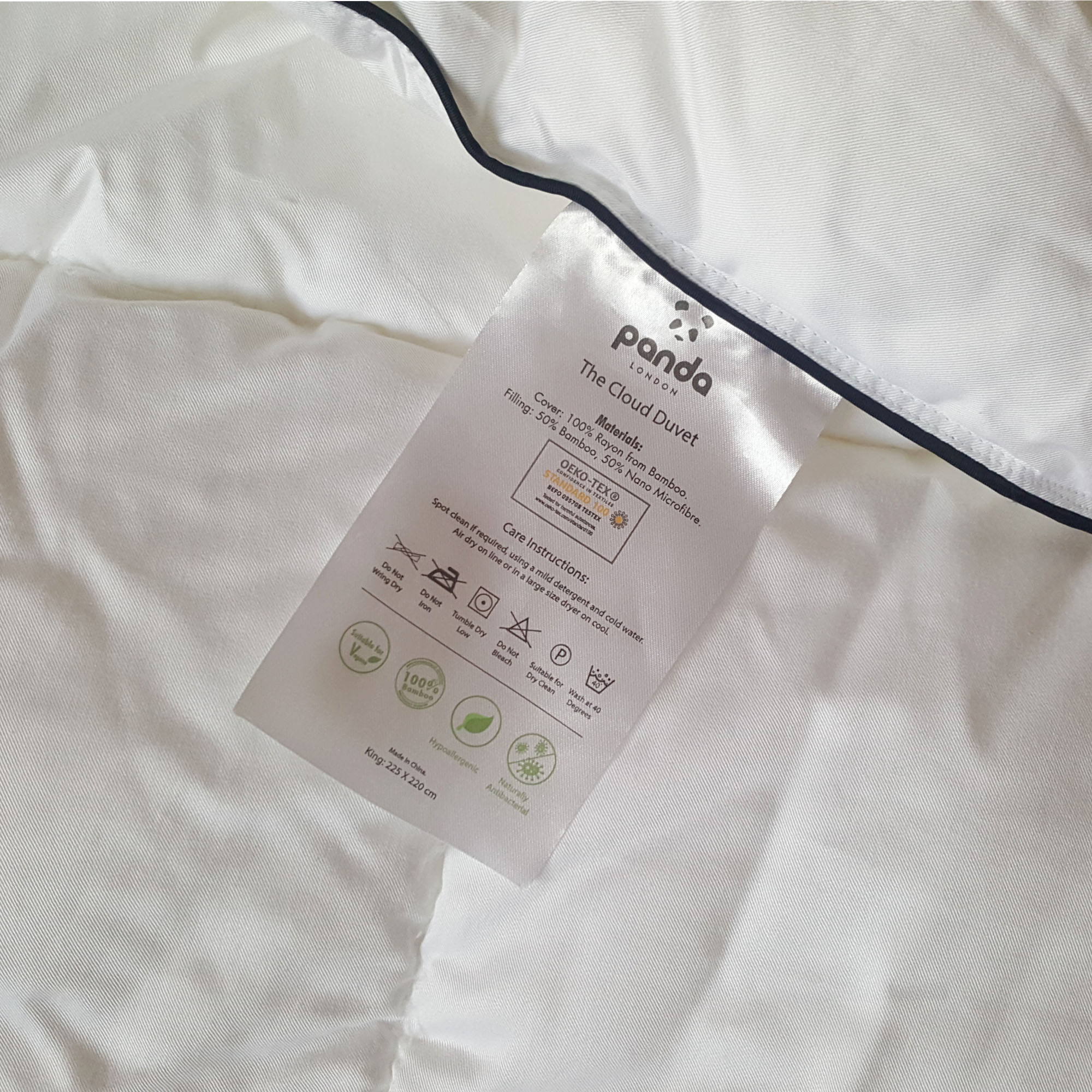
Value for money
As of writing, the 10.5 tog Panda Cloud duvet costs £129.95 for a double, which I do think is fairly expensive in the grand scheme of things.
For comparison a double in the synthetic polyester M&S Supremely Washable Duvet or the John Lewis Synthetic Soft Touch Washable Duvet is around £35. Both of these duvets are made from recycled polyester microfibre, like the Panda Cloud duvet, but they lack the bamboo element that the Cloud incorporates.
And I do think that bamboo mix makes a difference. The Panda Cloud duvet feels more luxurious to the touch, with a silky sheen that feels more premium than your average microfibre duvet. It reminds me of the feel of the Dunelm Fogarty Touch of Silk Duvet, which I was really impressed by.
The Dunelm Touch of Silk duvet is cheaper, at £50 for a double, but it doesn't feature recycled polyester, and, it doesn't benefit from bamboo's cooling powers.
Unlike all of the above alternatives, the bamboo element of the Panda Cloud duvet resulted in less overheating if you're a hot sleeper.
Overall, if you're looking for a vegan-friendly or an easy-to-care-for duvet that feels more premium than your average synthetic duvet, or you're after one that has above-average temperature regulation, I do think the Panda Cloud Duvet is worth the extra expense.
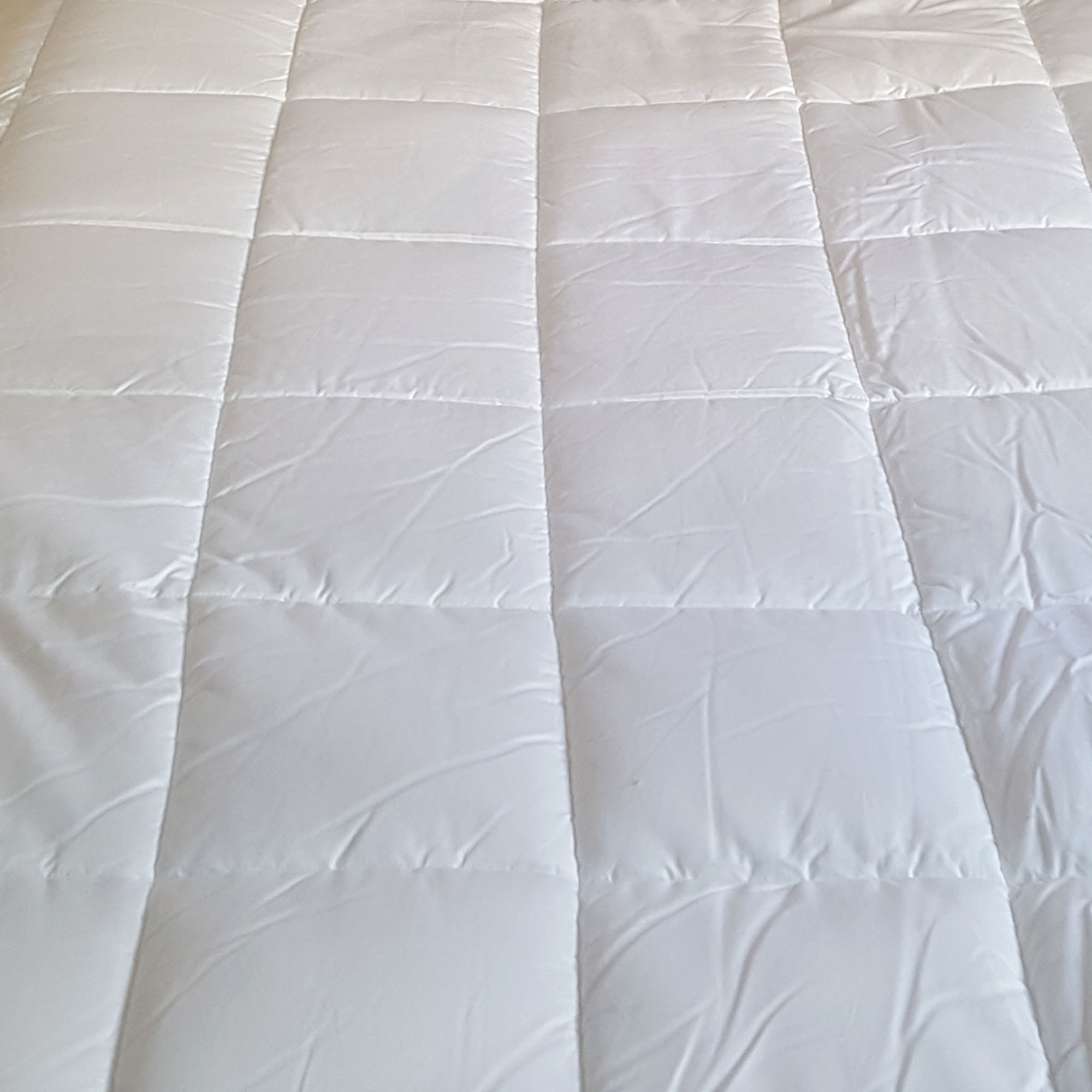
How I tested
I tested the Panda Cloud Duvet at home on my own bed, sleeping underneath it for a week to see how it performed.
Whilst testing it I assessed the duvet's feel – this includes how malleable and squashy it feels to scrunch up in my hand, how well it tucked in around my body at night, if it made any noise when doing so, and how well it drapes on the bed.
I also assessed the duvet's temperature regulation and breathability. In doing so I made sure to keep my bedroom at the ideal bedroom temperature recommended by sleep scientists to help us sleep better – between 16°c and 18°c. I also made sure to use the same breathable cotton duvet cover I use to test every duvet we put through Ideal Home's duvet testing process.
As a hot sleeper who is prone to overheating, I then set to snoozing to see if I slept comfortably throughout the night, or whether I woke up hot and sticky under the covers and had to fling a leg out of bed or throw the covers off myself to cool down. And, alternatively, if I woke up too cold.
I also assessed the duvet's ease of care, and where possible made sure to wash the duvet according to its care instructions to see if it came out of the washing machine looking and feeling as good as when it went in.
Lastly, I considered the duvet's price point and value for money, as well as researching any third-party reviews to see what a wider selection of owners think of the product, before giving the duvet a score out of five.

I'm Amy, and as Ideal Home's Sleep Editor I've spent the last four years testing sleep products by night and sharing my findings with our readers by day. That includes sleeping under more than twenty different duvets on my own bed to find the best-in-class. All in all, that's over 10,000 hours of at-home duvet testing under my belt.

Amy is Ideal Home’s Sleep Editor and the Ideal Home Certified Expert on Sleep. She's spent the last four years researching and writing about what makes for the best night’s sleep during the day and testing out sleep products to find the best-in-class by night. So far she’s clocked up over 10,000 hours of pillow, duvet, and mattress testing experience.
Our go-to for all things sleep-related, she’s slept on and under bestselling products from Simba, Emma, Hypnos, Tempur, Silentnight, Panda, and many many more.
As a hot sleeper, Amy is always on the lookout for the most breathable bedding, but she also leads a wider team of testers to ensure our product testing encompasses both hot sleepers, cold sleepers, front sleepers, back sleepers, side sleepers, and everything in-between.